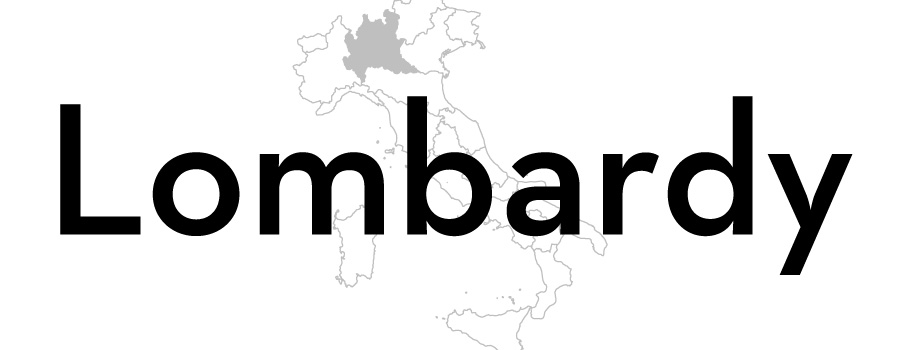
The food of Lake Garda
Luciana Squadrilli traverses the shores of Italy's largest lake, finding all the delicious things to eat and drink along the way.
The hills surrounding its shores are covered with luxuriant vineyards, olive groves and citrus trees and the local cuisine involves plenty of fish (freshwater, of course) such as pike, tench, carp, lavaret (or whitefish) and the rare carpione, a close relative to salmon which is only found in Lake Garda. Vegetables grow excellently in the fertile soil found around the lake and pair beautifully with the locally made extra virgin olive oils and wines. The Garda PDO oils, usually made with the local olive variety Casaliva, are fruity and very elegant, and are produced in the provinces of Brescia, Verona, Mantova and Trento. These are some of the most delicious products, ingredients and dishes from the area surrounding the lake.
Tortellini di Valeggio
Let’s start with pasta! The lovely village of Valeggio in Veneto may not be directly on the lake, but it does sit on the river Mincio, its only outflowing stream. It is home to a delicious type of fresh pasta made with an ultra-thin dough stuffed with meat and usually served with butter and sage leaves or broth. Their shape is reminiscent of a small knot and for this reason the tortellini are also called nodi d’amore (‘love knots’), linking them to romantic legends.
Bigoli con le sarde
Another pasta dish, yet this time the main ingredient is agoni, a type of freshwater sardine. Usually eaten on religious holidays when Catholics are forbidden to eat meat, this is a very traditional recipe of the area. The same dish (with the same name) is eaten in Venice, although there sardines from the sea are used.
Risotto con la tinca
The excellent rice grown around Lake Garda meets freshwater fish caught in its waters in this dish. Tenchis a tender and tasty fish which matches well with the risotto’s other ingredients (chard, extra virgin olive oil, butter, grated cheese and a herby fish broth). It should be served all’onda (on the wave), meaning it should not be too dry or sticky; instead, it should ripple like an ocean wave.
Luccio e polenta
Polenta – the solid or soft dough made from ground corn – is the other staple carbohydrate of northern Italy. Here, it is served ‘Gardesan-style’, that is to say soft and creamy and accompanied by a tasty sauce made of pike (luccio), garlic, capers, parsley, bay leaves, extra virgin olive oil and vinegar.
Garda lemons
Limone del Garda is a small and picturesque village perched on the northern shore of the Lake in Lombardy’s Brescia province near the Trentino border. As its name suggests there are many citrus trees here, leaning against the rocks facing over the lake. The beautifully scented lemons growing in the historical lemon houses, most likely planted by Ligurian monks in the seventeenth century (or even earlier), are mainly used for confectionery or distilling purposes. Yet they are also found as an ingredient in many local dishes.
Marroni del Monte Baldo PDO
The mountainous area on the Venetian side of the lake which stretches to the Lagarina Valley in Trentino is mainly covered with forests full of chestnut trees. The tasty chestnuts (marroni) that grow here are protected by the Monte Baldo PDO. Delicious when simply boiled or roasted, the chestnuts are also used to make candied marrons – chestnuts preserved in syrup or grappa – or even used as a flavouring for beer.
Broccoletti di Custoza
Even though the tiny hamlet of Custoza – mainly famous for the local DOC white wine – is not directly on Lake Garda, the delicious broccoletti (long-leaf broccoli) grown nearby are commonly considered as a typical product of the Garda area. Recently added to the Slow Food Presidia, the plants are hand-picked between December and early February, before the coldest time of the year, to keep them sweet and tender. The whole heads are eaten, usually boiled and seasoned with the local extra virgin olive oil before being served with boiled eggs, cheese, salumi or fresh sausages. They are also often used as an ingredient in risotto.
Carne salada
A typical product of the Trentino region, in the upper echelons of Lake Garda, carne salada (literally ‘salted beef’) is a seasoned lean cut of beef rolled in coarse salt and aromatics (usually bay leaves, black peppercorns, juniper berries, garlic cloves and rosemary). Traditionally cured in terracotta or glass containers for ten days, the meat is constantly massaged until ready. It’s served in thin slices seasoned with local extra virgin olive oil, maybe with some fresh greens on the side.
Fogassa
This is the traditional cake of the Garda area and is especially common in Verona, even though there are many different local variations. Fogassa may sound similar to focaccia, the plain flatbread similar to a pizza dough, but it is actually made by kneading flour, baking soda, milk and olive oil, as well as occasionally cornflour and grappa. Once rolled flat and cooked (usually grilled), the thin and very slightly sweet flatbread is delicious when dunked in milk.



